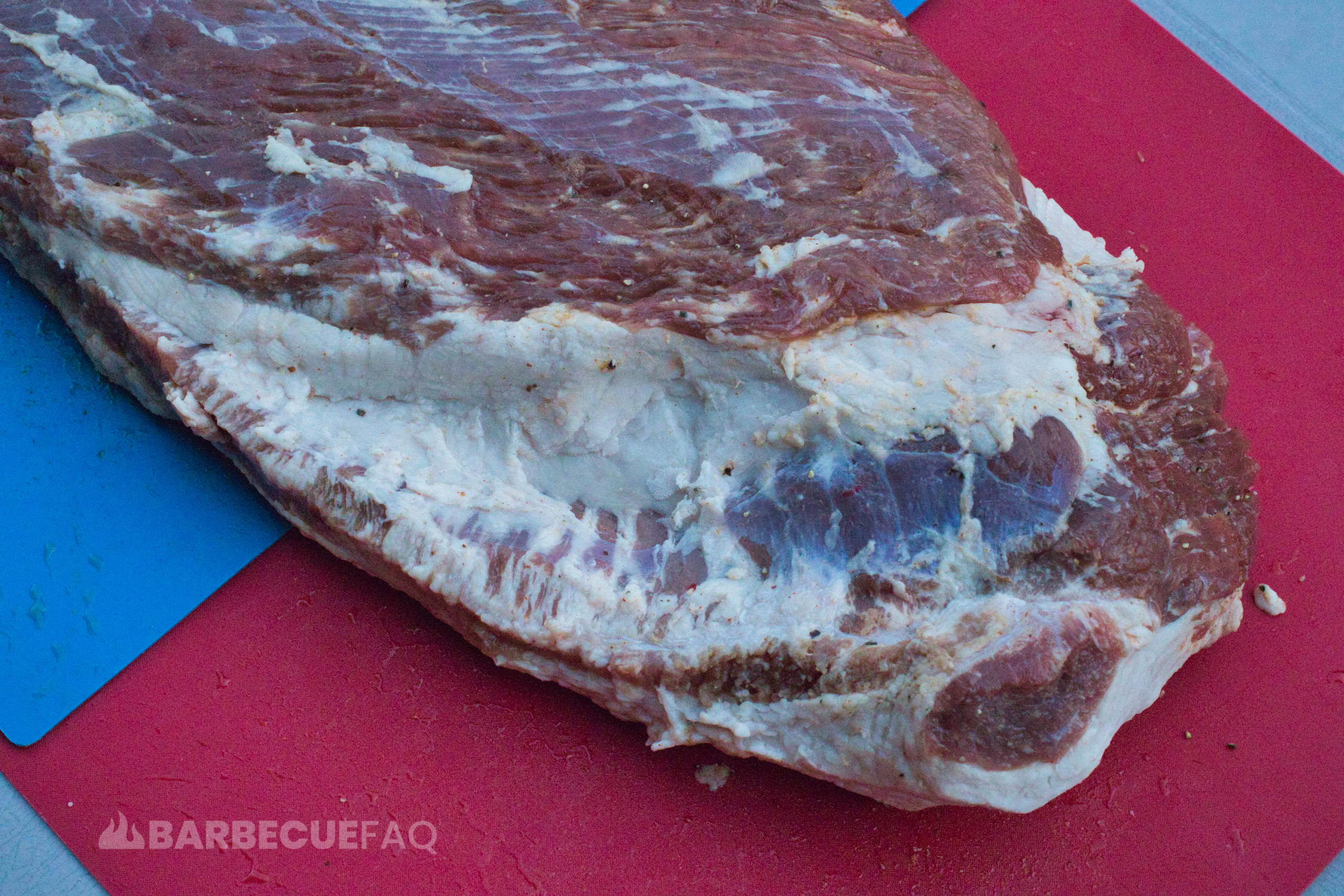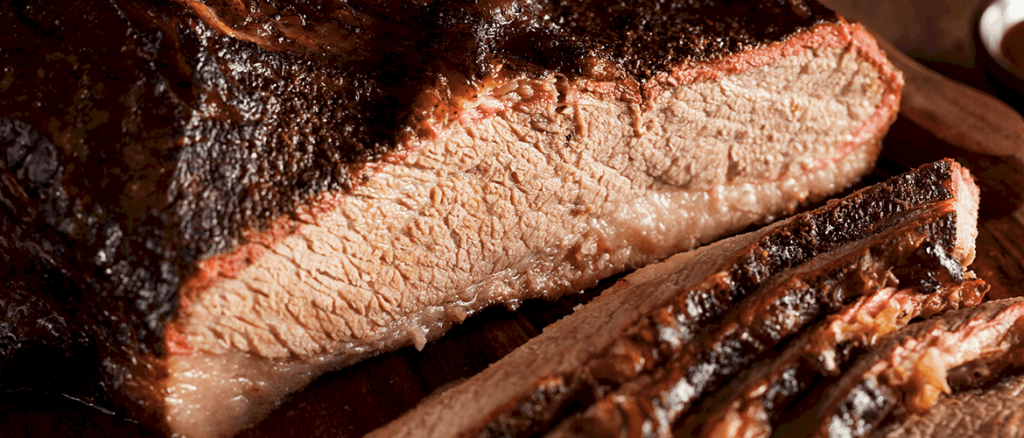To start, it’s important that we get our terminology right as a lot of articles/resources like to call things the “deckle” when they’re not.
The deckle itself is the attachment between the ribcage, breast bone, and the brisket itself (the chest muscles).
When a brisket is separated from the cow, it is left attached to the first 4 or 5 rib bones; So the ribs are interior and the brisket is exterior.

This covering is a “Deckle” and it’s comprised of hard fat and the M. intercostales interni; The M. intercostales interni refers to the muscles found between the bones.
When the brisket is sold at retail, this covering (deckle) is removed.
The IMPS labels the beef as “Beef Brisket, Deckle-Off, Boneless” on pg. 42.
What’s left on the brisket is the hard “deckle-fat” which they describe as “hard fat along the sternum edge.”

Often this is what people call the “deckle”, but based on the terminology above, we know that this fat isn’t exactly the deckle but part of it.
Is the Deckle the Brisket Point?
A lot of forums and barbecue websites will call the deckle the brisket point but that simply isn’t true.
The Brisket point is the pectoralis superficialis muscle – which is part of the chest musculature on the cow.

Removing this Deckle Fat
Angle your knife at a 45 degree angle and begin to slice it.
With your knife, you can follow this natural seam and you’ll notice it comes out quite easily.

Note: You don’t want to entirely follow this fat seam. If you do, you’ll completely separate these muscles.
This is about as much as I’d suggest removing from a brisket.

Here’s another example:

Deckle removed:

The reason we remove this piece is because it’s pure hard fat and won’t render.
People don’t like eating pure fat either so it’s essentially a waste.
Rather, people will render this into tallow or use it to add fat to ground meat for burgers or sausage.
Here’s a cross section to see what I mean:





